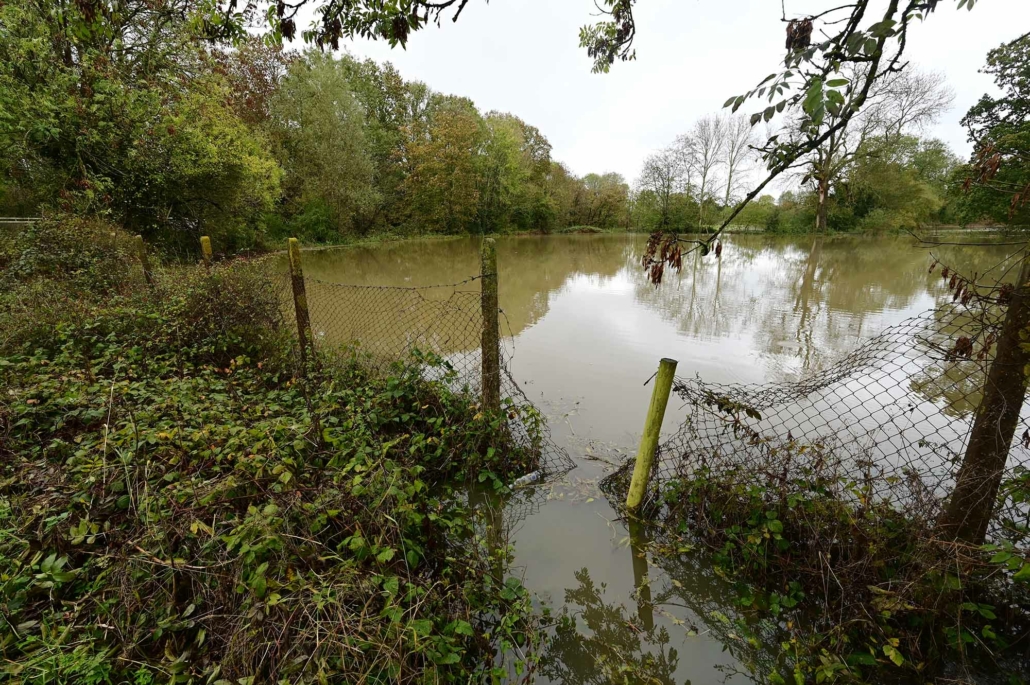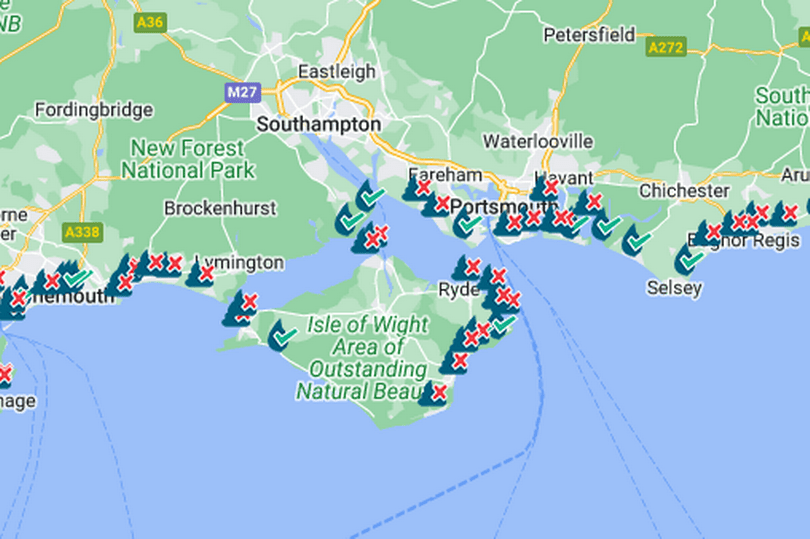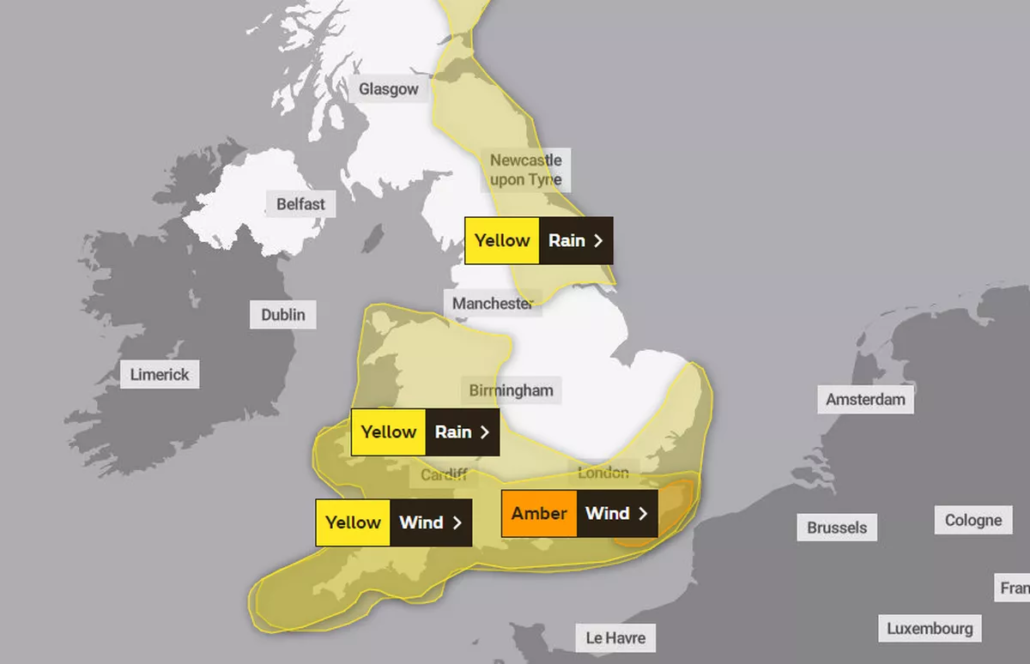Storm Ciarán was an extratropical cyclone that hit the United Kingdom on 1 November 2023. It was the third named storm to affect the UK during the 2023-24 season and closely followed Storm Babet. The storm travelled along the English Channel before moving into the North Sea.
What caused Storm Ciarán?
Storm Ciarán was caused by a process known as cyclogenesis. Cyclogenesis is the development or strengthening of a cyclonic circulation, which is a low-pressure system. Cyclogenesis can occur in various ways, but it is most common in the mid-latitudes, where cold and warm air masses meet.
In the case of Storm Ciarán, cyclogenesis was initiated by a strong jet stream that transported a cold air mass from the Arctic towards the UK. The cold air mass collided with a warm air mass over the North Atlantic Ocean, which created a temperature gradient. This temperature gradient provided the energy needed for the cyclogenesis process to begin.
As the cold air mass moved over the warm sea surface, it picked up moisture and heat. This caused the air mass to rise, which created a low-pressure system.
Low-pressure systems are essentially areas where the air is rising – this movement aids in building up the rain clouds associated with low-pressure systems.
The low-pressure system began to rotate, and the rotation intensified as the air mass rose. This intensification process is known as baroclonic cyclogenesis, the most common type of cyclogenesis in the mid-latitudes.
Storm Ciarán was a particularly intense cyclogenesis event. The storm’s central pressure dropped by over 24 millibars in 24 hours, which is the definition of explosive cyclogenesis. Explosive cyclogenesis events are rare, but they can produce very powerful storms.
Storm Ciaran set the record for the lowest mean sea level pressure recorded in November in England and Wales. According the Met Office, the lowest pressure seen as it crossed England was 953.3mb over Plymouth and 958.5mb over St Athans, Wales. This broke previous national records set in 1916 and 2010, respectively.
Which areas were affected by Storm Ciarán?
Storm Ciarán affected large areas of the UK from 1 to 2 November 2023, with particularly severe impacts in southern England, the Channel Islands and Wales. Heavy rainfall and strong winds caused widespread flooding, power cuts and travel disruption.
- Southern England: A weather warning was issued for the entire southern coast, which was battered by strong winds and heavy rainfall (some coastal areas experienced 30-40mm of rainfall).
- The Channel Islands: According to the Met Office, the Channel Islands experienced supercell thunderstorms. Jersey recorded hurricane-force gusts of more than 100mph (161km/h), with the eastern parts of the island experiencing a tornado. Schools were closed across the island for two days.
- Wales: A severe flood warning was issued around the Kiln Park caravan site in Tenby, Pembrokeshire. The caravan site was evacuated.
- Eastern England and Scotland: Flood alerts were issued for Essex, Suffolk, Norfolk, North and East Yorkshire and the east coast of Scotland.
What were the impacts of Storm Ciarán?
Storm Ciarán caused widespread flooding and damage around the UK, leaving thousands of homes without power, hundreds of schools closed and significant travel disruption.
What were the social impacts of Storm Ciarán?
- Evacuations: Around 40 people in Jersey were evacuated to hotels overnight on Wednesday after gusts of up to 102mph (164km/h) were recorded. Locals were also hit by huge hailstones “bigger than golf balls”. In Dorset, firefighters evacuated 70 people from 198 caravans at Freshwater Holiday Park in Burton Bradstock, near Bridport, with some being taken to dry land by boat.
- Education: More than 300 schools closed in southern England, mainly in Devon. Schools were closed across the Channel Islands.
- Power outages: Nearly 150,000 homes were left without power after the severe weather caused widespread flooding and damage. Around 9,000 homes across Devon and Cornwall, Sussex, Surrey and the Channel Islands were left without power.
- Transport disruption: The storm caused widespread disruption to transport services, including trains, buses, and flights. This made it difficult for people to get around and attend work or school.
What were the economic impacts of Storm Ciarán?
- Damage to infrastructure: The storm caused damage to roads, bridges, railways, and other infrastructure. This led to disruption to transport and other essential services.
- Transport disruption: The AA, which had many callouts in southern England, said it had rescued 84 customers stuck in floods. Many roads were closed due to flooding, including the A29 in West Sussex. The Port of Dover shut due to rough seas, which led to long queues. All flights from Jersey, Guernsey and Alderney were cancelled on Thursday, 2 November. Rail services across the country, particularly in the south of England, experienced disruption. East Coast Mainline passengers were advised not to travel until Saturday, 4th November, due to delays and cancellations.
- Damage to businesses: Many businesses were damaged by flooding and power outages. This led to a disruption in economic activity. For example, Drusillas Zoo in Sussex was closed.
- Impact on agriculture: Storm Babet had a significant impact on UK agriculture, causing widespread damage to crops, livestock and farmland. Existing crops have been damaged, and flooded fields mean farmers cannot carry out work from harvesting the current crops to planting the next. This will lead to lower yields, financial losses for farmers and disruptions to food supplies.
What were the environmental impacts of Storm Ciarán?
- Flooding: The storm caused widespread flooding, which damaged rivers, lakes, and wetlands. The flooding also displaced wildlife and polluted water supplies.
- Cliff collapse: A section of the West Bay cliff collapsed following large waves pounding the coastline, fuelled by the strong winds of Storm Ciarán.
- Landslides: The heavy rains caused landslides in some areas. This damaged forests and other natural habitats.
- Soil erosion: Top soil was eroded from exposed fields, increasing river nitrate levels as the eroded material reached watercourses.
- Pollution: The storm caused pollution to water supplies and wildlife habitats. This was due to sewage overflows and agricultural runoff into rivers. Sewage releases also occurred at beaches along the south coast, including Hampshire. The persistent rainfall has also resulted in Southern Water releasing sewage at several bathing sites and beach outfalls along the coast.
How did management strategies reduce the risk of Storm Ciarán?
Management strategies and how they reduced the risk:
- Early warnings: The Met Office issued early warnings about the storm, giving people time to prepare. Amber warnings were issued for Wales, the south coast of England, the east and northeast of England and the Scottish east coast. An amber warning was issued for high winds in southeast England.
- Flood warnings: The Environment Agency issued more than 200 flood alerts for England, alongside 86 flood warnings where flooding is expected. There were no severe flood warnings – the highest category – issued.
- Temporary flood defences: The Environment Agency deployed temporary flood defences in a number of locations, including Exeter Quay and West Bay in Dorset.
- Emergency planning: Local authorities and emergency services put in place plans to respond to the storm and its aftermath.
These management strategies helped to reduce the risk posed by Storm Ciarán and to mitigate its impacts. However, the storm was still very severe and caused significant damage.
Interested in finding out more about Storm Babat? Watch the Met Office Deep Dive below.




